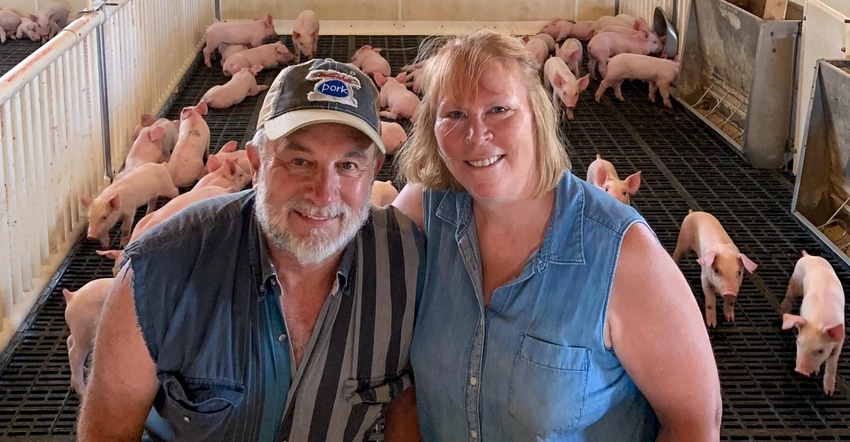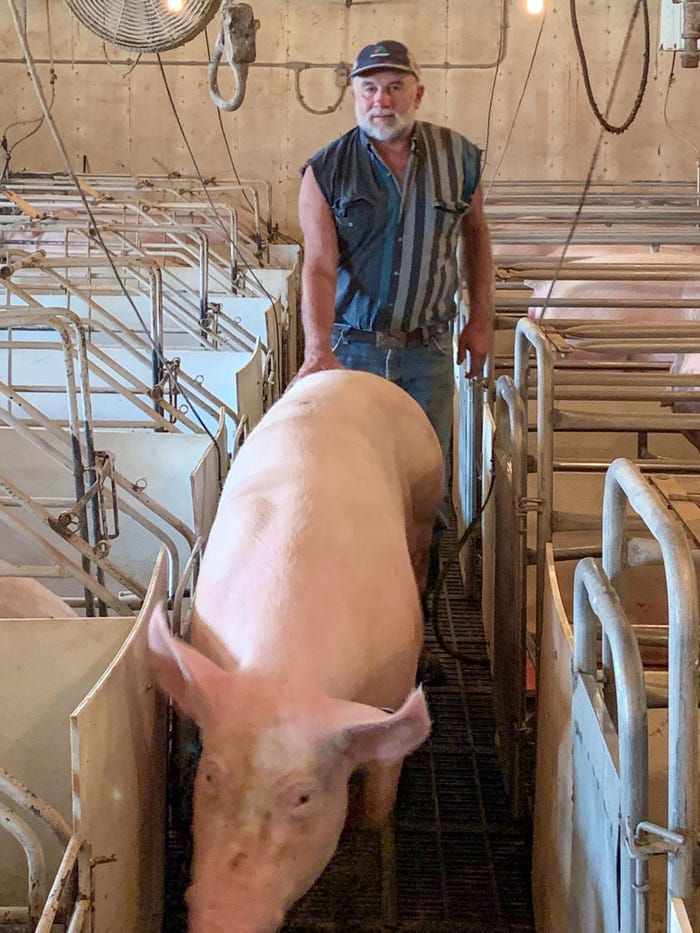September 25, 2020

Sometimes all you can do is pray. And pray is exactly what Ferlyn Hofer did when Smithfield Foods closed its Sioux Falls, S.D., processing facility due to a COVID-19 outbreak.
“I prayed for a home for these pigs. I prayed that somehow we would not have to euthanize them,” says Hofer, a farrow-to-finish hog producer from Canistota, S.D.
His voice breaks. Even now, months after the 30-day closure, emotions remain raw. Hofer had 600 market-ready pigs. In the 40 years he had sold to the Sioux Falls plant, nothing like this had ever happened. Six-hundred weaned pigs needed to move out of the farrowing barn. Nursery pigs were ready for the finishing barn. Sows were ready to deliver.
“Some guys could put their market-ready pigs on a maintenance diet. I couldn’t do this because I needed the space,” Hofer says. “I needed to find a home for these pigs.”
His son, Ryan, created a Facebook post. Within two weeks the family had sold all the finished pigs to families from across South Dakota. “Whether you believe in divine intervention or not — this was divine intervention,” Hofer says.
At first, they sold pigs at a loss of $25 per head Then, they sold them at break-even. Today, they sell them for a little more than what they would receive at Smithfield. And although Smithfield remains their primary market outlet, Hofer says because of the relationships developed with individuals, direct marketing will likely remain part of his marketing plan in the future.
“The people who came to us had never had an opportunity to buy a hog from a farmer before. Many didn’t even realize you could buy a pig direct from a farmer,” Hofer says. “Many have already lined up locker space so they can buy from us again this fall.”
Hofer recognizes direct marketing does not work for all hog producers. It worked for him because of the size of his operation and the fact he has ownership of his pigs.
For larger hog producers — some marketing as many as 3,000 or more hogs each week — direct marketing isn’t an option, according to Craig Andersen, president of the South Dakota Pork Producers and a contract finisher in Centerville, S.D.
“We’re just hopeful this doesn’t happen again,” he says.
Future demand
Will the increased demand for local foods disappear after COVID-19 is over?
The simple answer is “no,” according to Andrea Leschewski, South Dakota State University Food Systems and Agri-Business assistant professor.
“Demand for local foods will remain higher than what it was before COVID, but lower than what it is currently,” she says.
 NEW MARKET: Ferlyn Hofer moves a sow in his farrowing barn. He hopes selling direct to consumers will continue to be an option for marketing his finished hog.
NEW MARKET: Ferlyn Hofer moves a sow in his farrowing barn. He hopes selling direct to consumers will continue to be an option for marketing his finished hog.

Leschewski predicts consumers who choose to buy local due to food shortages or to avoid inflated meat counter prices during the pandemic will likely return to the aisles.
However, consumers who developed relationships with producers, value supporting local farmers and appreciate knowing where their food comes from will continue to buy directly.
“Customers who are truly concerned with food safety and reliability in the supply chain will not soon forget their concerns during the pandemic,” Leschewski says. “They want to make sure a local supply remains into the future.”
To have a clear understanding of what their customers are thinking, Leschewski suggests producers ask them. And if producers want direct marketing to remain part of their marketing plan, Leschewski offers this advice: “Make it convenient for consumers. What will set producers apart on whether they retain their local customers will be convenience.”
Roti writes from Sioux Falls, S.D.
You May Also Like




